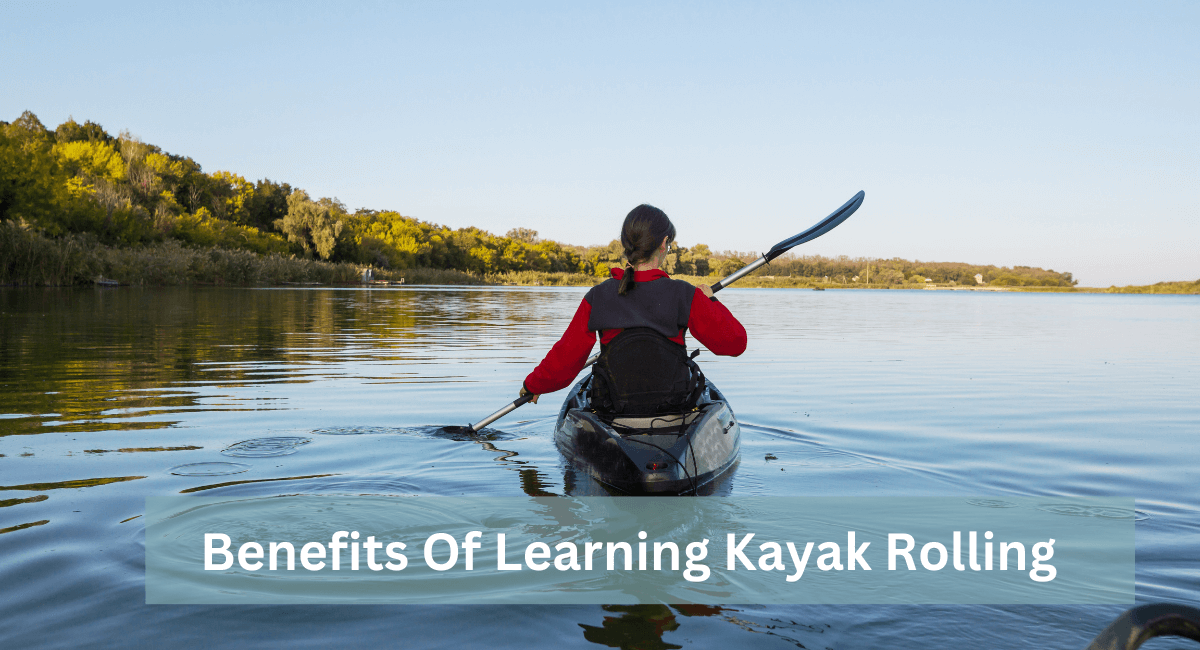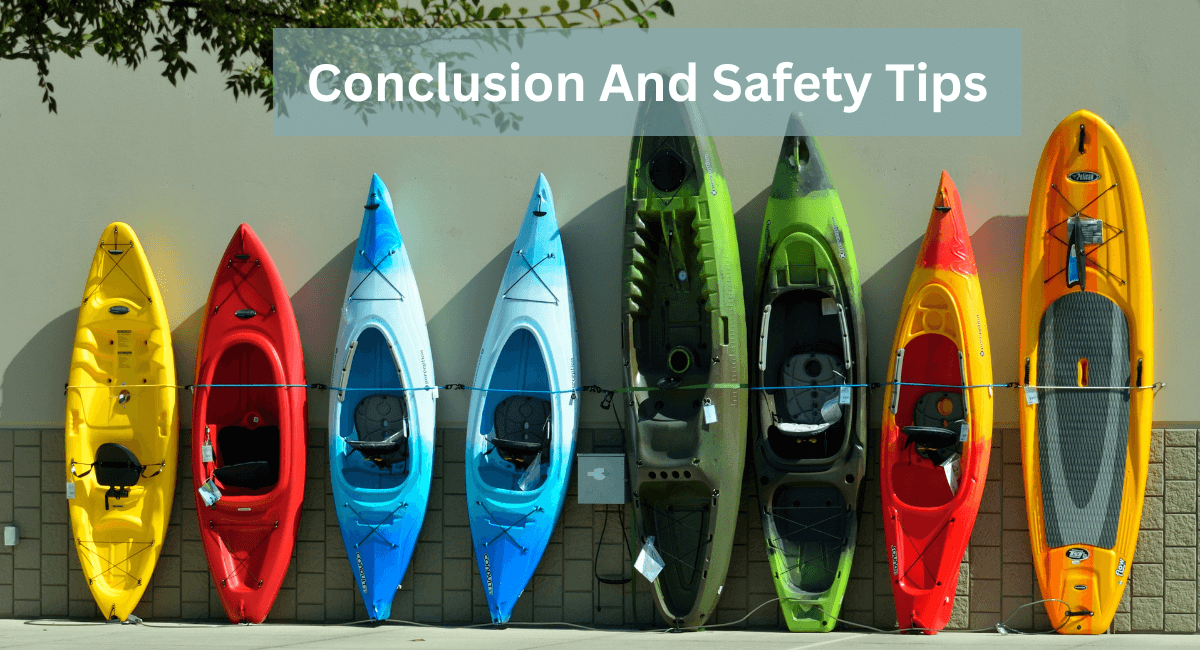The purpose of a kayak roll is to recover from a capsized position. It helps paddlers regain control quickly.
Kayaking is a thrilling water sport that requires skill and technique. One essential skill every kayaker should master is the kayak roll. This maneuver enables paddlers to flip their kayak upright after capsizing, preventing them from becoming trapped underwater. The kayak roll builds confidence and safety on the water, allowing kayakers to explore challenging conditions with ease.
Learning to perform a kayak roll effectively can enhance the overall kayaking experience and help paddlers navigate rough waters with confidence. This skill is vital for both beginner and experienced kayakers, as it ensures safety and control in unpredictable water environments.
Key Techniques For Kayak Rolling
Discover the key techniques essential for mastering the kayak roll, a crucial skill for kayakers. Successfully executing a kayak roll ensures safety and stability in challenging water conditions, enabling paddlers to swiftly recover from capsizing incidents. This advanced maneuver is vital for enhancing confidence and enjoyment while kayaking.
Proper Body Positioning
When it comes to mastering the kayak roll, having the proper body positioning is crucial. Your body position plays a key role in maintaining balance and stability as you execute the roll. Here are some key techniques to keep in mind:
- Head and Shoulders: Your head and shoulders should be relaxed and aligned with your body. Keep your head in line with the boat and avoid leaning forward or backward.
- Core and Hips: Engage your core muscles and keep your hips loose. By using your core, you can generate the necessary power and rotational force to initiate the roll.
- Legs and Feet: Your legs should be bent and your feet in contact with the footrests or foot braces. This provides stability and allows you to use your lower body to assist in the roll.
Paddle Placement And Control
Proper paddle placement and control are essential in executing a successful kayak roll. Pay attention to the following techniques:
- Hand Position: Grip the paddle with a slightly wider than shoulder-width grip. This allows for greater control and leverage during the roll.
- Blade Angle: Position your paddle blade at a slight angle to the water’s surface, with the power face facing toward you. This will help generate lift and provide optimal paddle control.
- Paddle Movement: Use a smooth and fluid motion when sweeping the paddle blade through the water. Maintain a steady and controlled movement, ensuring that the blade stays in contact with the water throughout the roll.
Remember, mastering the kayak roll takes practice and patience. By focusing on proper body positioning and paddle placement, you can improve your technique and increase your success rate. Take the time to practice these key techniques regularly, and soon you’ll be confidently executing a kayak roll in any situation.
Types Of Kayak Rolls

Kayak rolls serve a vital purpose in ensuring a kayaker’s safety and skill. Various types of kayak rolls are practiced and mastered by kayakers. Understanding the different types of kayak rolls can enhance a kayaker’s abilities and confidence on the water.
A standard kayak roll is a foundational role often learned by beginners. It involves a smooth and controlled movement to right the kayak from an upside-down position.
The extended kayak roll is an advanced technique that requires the kayaker to utilize additional leverage and flexibility to execute the roll successfully.
Equipment Required
Kayak
A kayak is a small boat typically for one person.
Paddle
A paddle helps propel and steer the kayak through the water.
Sprayskirt
A sprayskirt keeps water from entering the kayak.
Safety Gear
Safety gear such as a life jacket and helmet are crucial for protection.
Benefits Of Learning Kayak Rolling

Learning how to perform a kayak roll is essential for any paddler, whether you’re a beginner or an experienced kayaker. The ability to successfully execute a kayak roll not only enhances your safety on the water but also increases your confidence in challenging situations. In this article, we will delve into the benefits of learning kayak rolling and why it is a skill that every kayaker should strive to master.
Enhanced Safety
One of the primary benefits of learning a kayak roll is the enhanced safety it provides while paddling. By mastering this technique, you can quickly recover from a capsize and regain control of your kayak. In rough water or challenging conditions, the ability to perform a self-rescue can mean the difference between a dangerous situation and a minor setback.
Imagine you’re paddling in turbulent whitewater. Suddenly, your kayak flips over, leaving you disoriented and submerged underwater. Having the knowledge and skill to execute a kayak roll enables you to swiftly upright your kayak and continue your journey without relying on external assistance.
Moreover, knowing how to perform a kayak roll allows you to explore new and exciting paddling environments with increased confidence. You can conquer more challenging routes, navigate through tight spaces, and take on rougher waters, knowing that you can recover should you encounter a mishap.
Increased Confidence in the Water
Another significant benefit of learning kayak rolling is the boost it provides to your confidence while on the water. As a kayaker, self-assurance plays a vital role in your overall enjoyment and performance. The knowledge that you can handle unexpected situations increases your sense of control and bravery.
Learning to roll a kayak requires practice and perseverance. As you progress, mastering this technique instills a sense of achievement, allowing you to tap into your potential as a paddler. With each successful roll, your self-confidence grows, and you become more comfortable pushing the boundaries of your abilities.
Enhanced confidence on the water not only affects your kayaking skills but also extends to other aspects of your life. As you overcome challenges and develop resilience through kayak rolling, you gain a renewed sense of self-belief that can positively impact various areas of your life.
In conclusion, the benefits of learning kayak rolling are clear. By enhancing your safety on the water and increasing your confidence as a paddler, kayak rolling becomes an essential skill in your kayaking repertoire. Whether you’re a beginner or an experienced kayaker, investing time and effort into mastering this technique will undoubtedly take you to new heights, both in terms of skill and self-assurance.
Common Mistakes And How To Avoid Them
When learning the kayak roll, it’s important to be aware of the common mistakes that can hinder your progress. By understanding these mistakes and how to avoid them, you can improve your technique and achieve a more successful role. Let’s take a look at some of the typical errors made during a kayak roll and how to steer clear of them.
Improper Hip Snap
An improper hip snap is one of the most common mistakes when performing a kayak roll. This occurs when the paddler fails to use their hips to generate the momentum needed to right the kayak. Instead of engaging the core and quickly snapping the hips to initiate the rotation, the paddler relies too much on upper body strength, which can lead to an unsuccessful roll.
To avoid this mistake, focus on using your lower body to drive the hip snap. Practice engaging your core muscles and initiating the rotation from your hips rather than relying solely on your arms. By developing a strong and efficient hip snap, you can improve the success rate of your kayak roll.
Inadequate Head Position
The position of your head during a kayak roll is crucial for maintaining proper body alignment and balance. One common mistake is keeping the head in a downward position, which can cause the body to follow suit and lead to an unsuccessful roll. Conversely, lifting the head too soon can result in loss of stability and compromise the roll.
To avoid this mistake, maintain a neutral head position throughout the roll. Keep your head aligned with your body and focus on looking toward the surface of the water, allowing your body to naturally follow and maintain stability. By keeping a steady and neutral head position, you can enhance the effectiveness of your kayak roll.
Learning Resources
Learning Resources for mastering the kayak roll is crucial for developing the necessary skills and techniques to perform this advanced kayaking maneuver. With the right guidance and practice, anyone can become proficient in executing a kayak roll successfully. Let’s explore the various learning resources available to help individuals advance their skills in this challenging aspect of kayaking.
Qualified Instructors
Learning the kayak roll from qualified instructors provides invaluable hands-on training and personalized guidance. Experienced instructors offer expert knowledge and individualized feedback, helping kayakers master the intricacies of this essential technique. With their assistance, kayakers can swiftly progress and build confidence in executing a flawless kayak roll.
Online Tutorials
Access to online tutorials allows kayakers to learn at their own pace and convenience. These tutorials provide step-by-step demonstrations, visual aids, and comprehensive explanations to help learners grasp the fundamental mechanics of the kayak roll. With the flexibility of online tutorials, kayakers can review and revisit the material as needed, reinforcing their understanding and refining their technique.
Conclusion And Safety Tips

Discover the importance of mastering the kayak roll to enhance your safety on the water. By practicing this technique, kayakers can confidently navigate challenging conditions and swiftly recover from capsizing. Implementing safety tips while perfecting the kayak roll ensures a secure and enjoyable paddling experience.
Kayak rolling is an essential skill that every kayaker should master, as it helps in maintaining control and stability when paddling in challenging waters. To conclude this discussion, let’s highlight the importance of regular practice and the safety precautions you should always consider when attempting a kayak roll.
Importance Of Regular Practice
Regular practice is crucial for improving your kayak rolling technique. By dedicating time to practice, you can refine your skills and build muscle memory, allowing you to execute the roll effortlessly in real-life kayaking scenarios.
- Practice in calm and controlled environments, such as swimming pools or flatwater lakes, before progressing to rougher waters.
- Start by mastering the basic techniques, such as the hip snap and paddle placement, and gradually work on more advanced rolls.
- Set specific goals for each practice session and track your progress to stay motivated.
- Consider taking lessons from a certified instructor who can provide valuable guidance and feedback.
- Remember, practice makes perfect – the more you practice your kayak roll, the more confident and comfortable you will become in your abilities.
Safety Precautions To Consider
While practicing kayak rolls, it is vital to prioritize safety. Here are some essential safety precautions to keep in mind:
- Always wear a properly fitted personal flotation device (PFD) to ensure your safety in the water.
- Choose a location with a spotter or a fellow kayaker nearby, who can assist you in case of any emergencies.
- Before attempting a roll, make sure you have a clear understanding of the water conditions and any potential hazards.
- Practice in water depths that allow you to touch the bottom with your hands, providing a safety net if needed.
- If you are new to rolling, consider using protective gear such as a helmet or a nose plug to minimize the risk of injury.
Remember, safety should always be your top priority when engaging in any watersport activity. By following these safety tips and regularly practicing your kayak roll, you will enhance your skills and gain the confidence needed to navigate challenging water situations with ease. Happy paddling!
Frequently Asked Questions For What Is The Purpose Of Kayak Roll
What Is A Kayak Roll?
A kayak roll is a technique used to upright a capsized kayak by rotating the kayak and the paddler back to an upright position. It allows the paddler to quickly and efficiently recover from a capsized position without exiting the kayak.
Why Is It Important To Learn The Kayak Roll?
Learning the kayak roll is important because it enhances safety and confidence while kayaking in rough waters. It allows paddlers to recover from capsized positions without the need for assistance, making them more self-sufficient and less reliant on external help in challenging conditions.
How Do You Practice The Kayak Roll?
Practicing the kayak roll involves proper training in a controlled environment such as a pool or calm body of water. Techniques like the hip snap and paddle positioning are essential to successful execution. It’s crucial to seek guidance from experienced instructors for safe and effective practice.
What Are The Different Types Of Kayak Rolls?
There are various types of kayak rolls, including the standard Greenland roll, C-to-C roll, and sweep roll, each with its unique technique and benefits. Paddlers can choose the role that best suits their body type, kayaking style, and comfort level for efficient recovery in different situations.
Conclusion
To sum up, the purpose of a kayak roll is to ensure safety and regain control in challenging situations while kayaking. By mastering this technique, paddlers can prevent capsizing, navigate rough waters, and tackle rapids with confidence. With practice and proper training, the kayak roll becomes an essential skill for any kayaker, enhancing their overall experience on the water.
